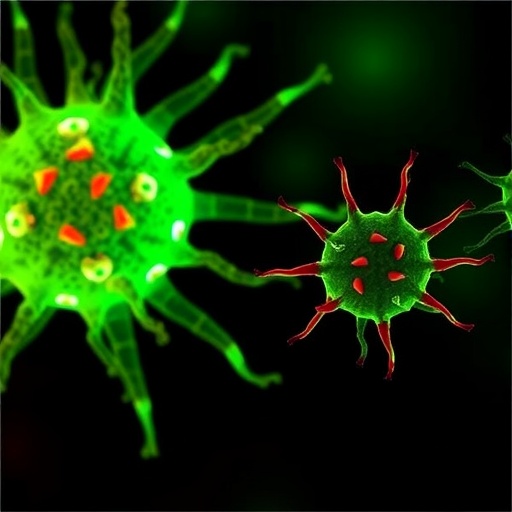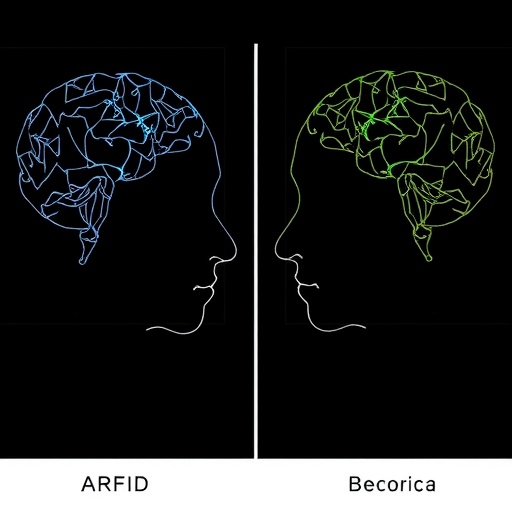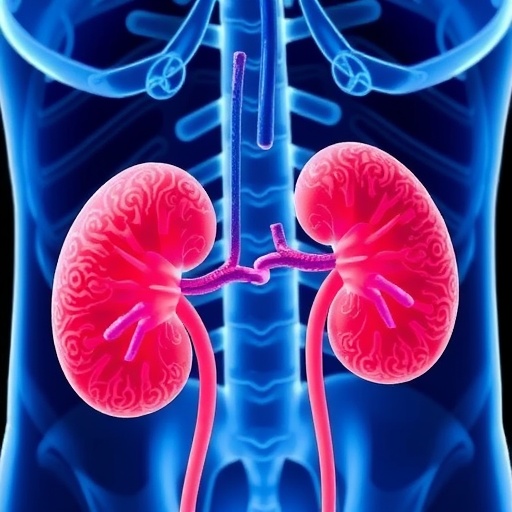Recent research has unveiled a crucial link between the notorious bacterium Porphyromonas gingivalis and the aggressive nature of cervical squamous cell carcinomas (CSCC). The study, conducted by Huang et al., elucidates a previously unrecognized mechanism through which this oral pathogen may promote the metastatic potential of cervical cancer. The findings shed light on a specific signaling pathway involving FimA, CD151, and ITGB1, suggesting that P. gingivalis could play a significant role in tumor progression beyond the well-documented periodontal implications associated with this bacterium.
In cervical cancers, the presence of P. gingivalis raises questions about the bacterial influence on cancer biology, particularly regarding the interactions between the tumor microenvironment and microbial colonization. This pivotal study delves into the interaction amongst the host’s immune responses, tumor characteristics, and the bacterial colonization, pointing to a complex interplay that favors not just tumor survival, but also its aggressive advancement. As researchers continue to unravel these connections, a clearer picture emerges that identifies oral health as a potential player in the management of cervical cancer.
The significance of this discovery cannot be overstated. As the third most common female-specific cancer globally, cervical cancer poses a formidable public health challenge. The majority of CSCC cases are linked to persistent infection with high-risk human papillomavirus (HPV), yet Huang and colleagues highlight that there may be additional factors at play. Examining the role of microbial flora, particularly non-viral pathogens, in favoring cancer progression suggests a multifaceted approach to understanding cancer etiology.
By utilizing a robust experimental framework that incorporates both in vitro and in vivo models, the authors demonstrate that P. gingivalis colonization leads to enhanced migratory and invasive behaviors in cervical cancer cells. The integration of molecular biology techniques enabled the team to dissect the signaling mechanisms triggered by bacterial factors. Particularly, the study suggests that FimA, a fimbrial protein associated with P. gingivalis, activates signaling pathways that encourage tumor metastasis via interaction with the CD151 and integrin beta1 (ITGB1) proteins.
Amid the backdrop of cervical cancer research, the emergence of this bacterial link urges healthcare practitioners to reconsider the holistic management of cancer patients. The implications of co-infections and the dynamics of the microbiome in oncogenesis may influence treatment protocols and emphasize the importance of maintaining oral health, especially in patients diagnosed with cervical carcinomas.
Further examination of FimA’s role in cellular signaling reiterates that microbial factors could modulate the tumor-host interactions that underlie cancer progression. The comprehensive analysis provided by this study expands our knowledge on how the presence of bacteria can complicate treatment efficacy and lead to worse clinical outcomes. Additionally, it reinforces the need for preventative strategies that encompass oral health education and management in patient care frameworks.
It is pertinent to note that traditional treatment regimens focusing solely on cancerous cells may overlook the essential roles of associated microbial populations. The synergy between cancer therapies and microbial health must be carefully evaluated to mitigate complications arising from infections, which can further compromise the immune system of cancer patients. Understanding how P. gingivalis assists cervical tumors could lead to innovative therapies that either target bacterial colonization or leverage this information to enhance existing cancer treatments.
Moreover, the investigation indicates that P. gingivalis may also incite an inflammatory response within the tumor microenvironment. This chronic inflammation shadows numerous cancer pathways and is well-established as a facilitator of cancer progression. By elucidating the specific interactions between this oral pathogen and CSCC cells, researchers are opening new research avenues aimed at exploiting these findings in developing adjunctive therapies and anticipating patient responses to conventional modalities.
As the scientific community probes deeper into the living interactions between viruses, bacteria, and human cancer development, the elucidation of these pathways holds promise. Understanding P. gingivalis’s role as not merely a commensal organism, but as an active participant in cancer biology, inspires further studies into other bacteria’s potential contributions to various cancers. This shift emphasizes the need to incorporate microbial ecology into cancer research and treatment discussions.
Equipped with the knowledge of these microbial interactions, healthcare professionals could advocate for screening programs that assess and educate patients on maintaining optimal oral health. As the study suggests a high mortality rate correlated with advanced stages of cervical cancer, managing P. gingivalis-related risks could ultimately contribute to lowering the incidence of metastasis and improving overall survival rates.
Looking ahead, the pathways discussed in Huang et al.’s work lay a theoretical groundwork for potential therapeutic advances. Could targeting the FimA/CD151/ITGB1 signaling axis become a novel strategy for disrupting cancer metastasis in patients known to harbor P. gingivalis? As research continues to unfold, we may very well see a paradigm shift in how we approach the interconnectedness of oral pathogens and systemic diseases such as cancer.
In conclusion, the implication of Porphyromonas gingivalis in cervical squamous cell carcinomas is a compelling narrative that weaves together microbial health and cancer biology. As we stand on the brink of potentially groundbreaking interventions in cervical cancer treatment, the findings prompt a reevaluation of how oral health influences systemic diseases. The path ahead requires the collective efforts of researchers, clinicians, and public health educators to bridge the gap between microbiology and oncology, ensuring that patients receive comprehensive, informed care.
These insights not only have the potential to inform better clinical practices but also encourage individuals to prioritize their dental health as a proactive measure against severe diseases. As we seek to understand the full scope of cancer risk factors, the intersection of infection and oncogenesis opens new doors to innovative, life-saving research and treatments.
Subject of Research: The role of Porphyromonas gingivalis in cervical squamous cell carcinomas and its effect on metastasis.
Article Title: Colonization by Porphyromonas gingivalis in cervical squamous cell carcinomas promotes metastasis through FimA/CD151/ITGB1 signaling.
Article References: Huang, X., Zhuang, Y., Wang, R. et al. Colonization by Porphyromonas gingivalis in cervical squamous cell carcinomas promotes metastasis through FimA/CD151/ITGB1 signaling. J Transl Med 23, 1166 (2025). https://doi.org/10.1186/s12967-025-06928-y
Image Credits: AI Generated
DOI: 10.1186/s12967-025-06928-y
Keywords: Porphyromonas gingivalis, cervical squamous cell carcinoma, metastasis, FimA, CD151, ITGB1, cancer research, microbiome, oral health, cancer progression.
Tags: aggressive nature of cervical cancerbacterial influence on tumor biologycervical squamous cell carcinoma metastasisconnections between periodontal disease and cancerFimA signaling pathway in cancerimmune response in cervical cancermicrobial colonization and cancer progressionoral health management in cancer careoral pathogens and cancer riskPorphyromonas gingivalis and cervical cancerpublic health implications of cervical cancertumor microenvironment and oral health





